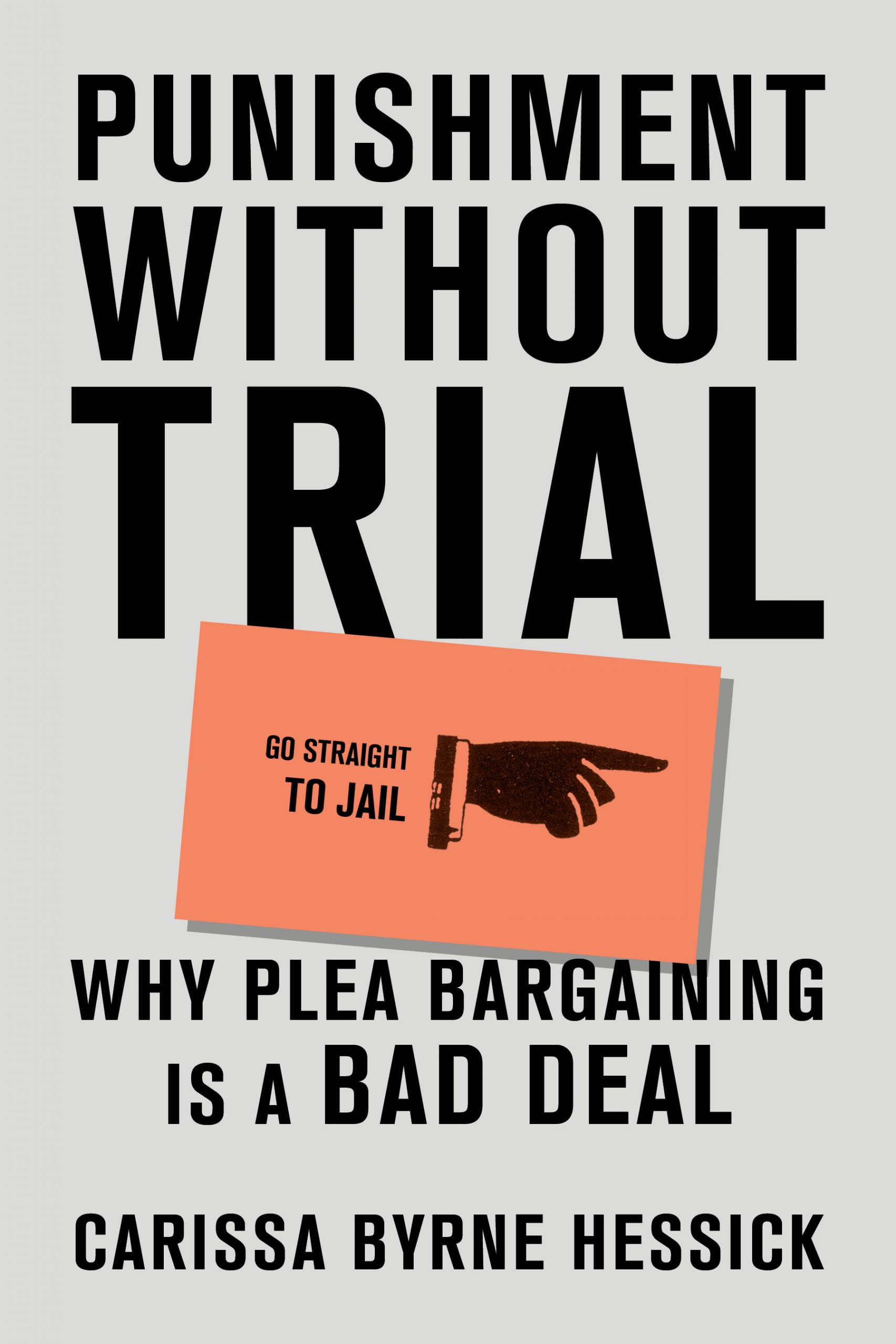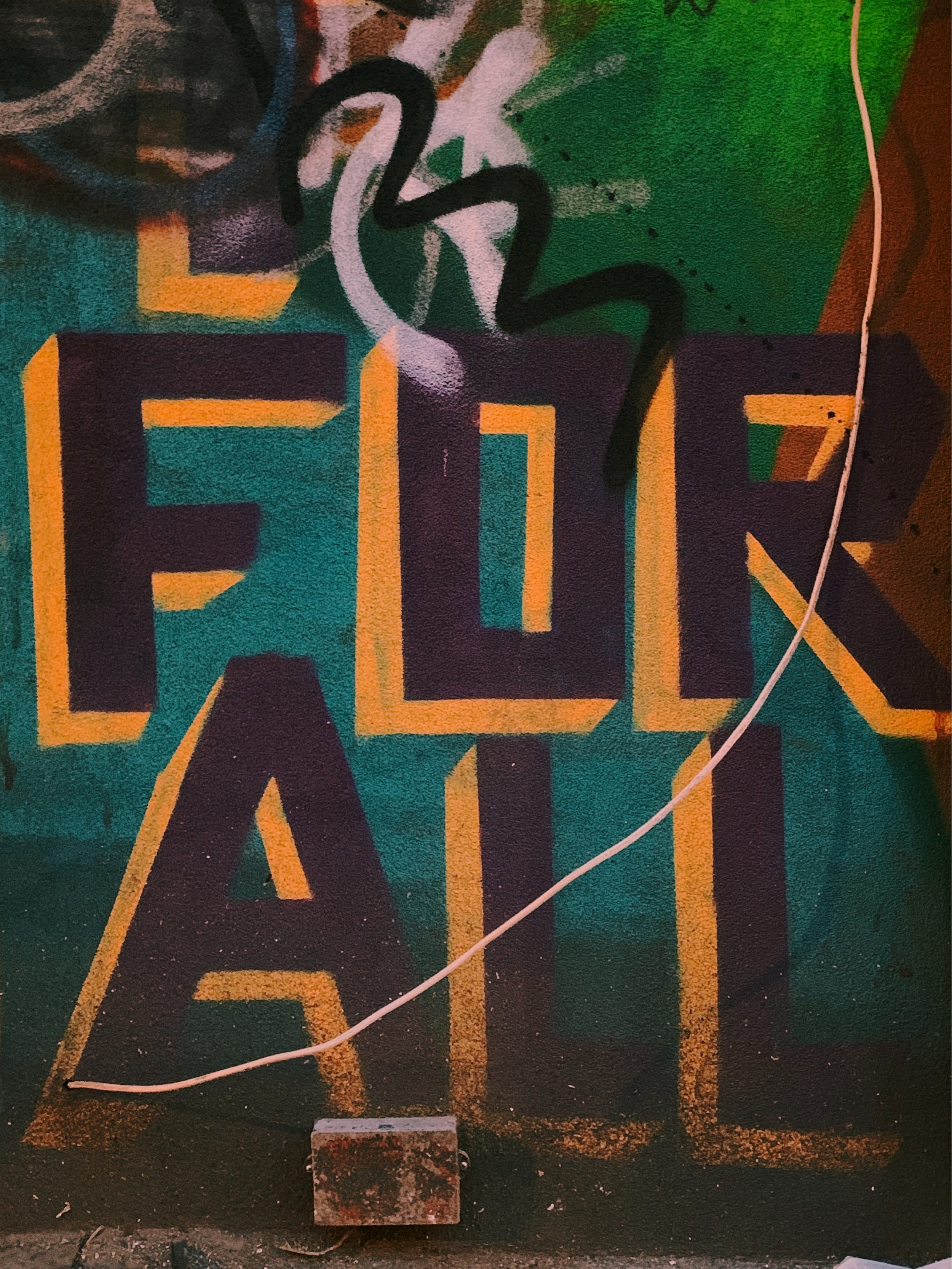PUNISHMENT WITHOUT TRIAL
Why Plea Bargaining Is a Bad Deal
By Carissa Byrne Hessick
Carissa Byrne Hessick’s Punishment Without Trial paints a damning picture of plea bargaining. Of course, because the operation of the criminal legal system is hyperlocal, it’s tricky to capture everything that goes on across the country. Still, Hessick, a law professor at the University of North Carolina at Chapel Hill, comprehensively explores plea bargaining’s problems. As she details, it is a system of coercion and asymmetry where, for many defendants, the benefit of pleading guilty outweighs the downsides of going to trial. Deftly weaving in anecdotes, interviews, and statistics, Hessick walks through the pressure points of the plea-bargaining system that may impel a defendant — even one who is innocent — to plead guilty. From the so-called trial tax and the risk of trumped-up charges to pretrial incarceration and the inconvenience of frequent court dates, it is easy to see why our system, as Hessick laments, is largely one of pleas, not trials. It is far too easy for the government to extract guilty pleas. The government has all the leverage. And this, Hessick argues, is how “we ended up with mass incarceration.”

Hessick’s portrayal of a plea system that’s out of control is compelling. The solution that Hessick identifies — more trials — is important, but also raises additional questions and concerns that should not be ignored. As Hessick explains, the problems with plea bargaining cut across racial lines, yet Black and Brown defendants have another question they must consider before standing on their trial rights — a question that white defendants can usually breeze past: How will their race affect trial? Hessick acknowledges early on that because the book is “about the criminal justice system, it is inevitably a book about race.” And as she shows, you cannot consider why someone may accept a guilty plea without thinking about why they would not risk trial. But there is an uncomfortable truth underlying the book: Black and Brown defendants may plead guilty because they think (or know) that they will not get a fair trial because of their race. Just as the other coercion points that Hessick describes may push a defendant to plead guilty, so too may a defendant’s race. The decision to go to trial can look very different for Black and Brown people than it does for white people.
Take the heart-wrenching story of Damian Mills, which Hessick both opens and closes Punishment with. Damian pleaded guilty to a murder he did not commit and spent over a decade in prison before he was exonerated. At the end of the book, Hessick recalls asking Damian if he regretted pleading guilty to a crime he did not commit. Damian’s answer surprised her: He only regretted not getting a better plea deal, because, in the end, he believed that if he went to trial, he would have lost. This answer haunted Hessick, prompting her to ponder how to fix the trial process to ensure people like Damian have more faith in the system. Hessick identifies some reforms, like addressing problems with law enforcement, fully funding our public defense system, and making sure prosecutors do not rely on false or misleading evidence. As Hessick concludes: “We can’t ask juries to tell us whether people are innocent or guilty unless we give them the evidence that they need to make better decisions.” I agree with Hessick here.
But I wasn’t as surprised by Damian’s answer. Damian was a Black man facing murder charges in a North Carolina county where white people ran law enforcement. North Carolina prosecutors designed a statewide training program on how to strike Black people from juries. Studies show that this training worked: North Carolina prosecutors were far more likely to strike Black North Carolinians than white North Carolinians and suffered no recourse. And just a few years before Damian’s plea, an all-white jury in the same jurisdiction sentenced a Black teen to death. Perhaps Damian’s belief that he would have been convicted at trial — perceptibly or imperceptibly — stemmed from a deep-seated fear that he could never overcome the overwhelming evidence that was the color of his skin. I was not shocked to read that a Black man accused of murder in the South was doubtful that he would get justice.
While plea bargaining may have its problems, there are several truths about the trial system that, without serious reform, may make trial an equally unappealing alternative for Black and Brown defendants caught in the system. These truths may help explain, on top of all the reasons Hessick lays out, why people of color plead guilty.
Truth 1: Black and Brown people are disproportionately excluded from juries. In jurisdictions across the country, from California to Mississippi, a jury of one’s “peers” usually means a jury filled with white people. First, Black and Brown people are often underrepresented in the jury pool. This can be due to source issues: like using voting rolls to compile the pool despite Black and Brown people not being registered at the same rate as white people. Qualification issues: like the fact that many states have laws in place that disqualify people with felony convictions from jury service, disproportionately affecting people of color. Or burden issues: jury service is not compensated adequately, and therefore the needed sacrifice may be prohibitive for poor people, particularly poor people of color. Then, even if Black and Brown people make it into the pool, prosecutors routinely strike them at disproportionate rates, and the law has made it easy for them to get away with this rank discrimination.
If I were a poor Black or Brown defendant, I may think twice about going to trial knowing that few of my “peers” on the jury will look like me or identify with my life experiences.
Truth 2: People hold both explicit and implicit racial biases. A Black or Brown defendant may hesitate to go to trial and instead accept a plea because they also know that racism is real. Over the past few years, the number of hate crimes against Black, Latinx, and Asian Americans have soared. A recent survey also found that people think it is increasingly more common for people to express racist or racially insensitive views, and that it is increasingly more common for those views to be seen as acceptable. This is just explicit bias. Implicit biases are just as problematic, as studies reveal that darker skin is more often associated with dangerousness, violence, and a predisposition for criminality. Thus, for Black and Brown people, sitting in the courtroom just wearing their skin can trigger a viscerally negative response — either consciously or subconsciously — in many people.
If I were a poor Black or Brown defendant, I may think twice about going to trial knowing that my skin color would be on trial too.
Truth 3: It is hard to uncover — much less fix — racial bias in the jury system. Knowing racial bias is real, there is also the problem that it is challenging to uncover bias at trial. Moreover, even if racial bias is uncovered, it is hard to remedy. It is no secret that it is tough to effectively voir dire for racial bias, and court systems across the country have not adequately implemented comprehensive procedures to address implicit bias. Then, juries deliberate in secret, so even if jurors express their bias, it is extremely difficult to discover that fact. Beyond that, even if a juror’s racial bias is uncovered, it is hard to get redress.
If I were a poor Black or Brown defendant, I may think twice about going to trial knowing that the trial mechanisms designed to keep the jury impartial are ineffective and at times allow bias to flourish.
Truth 4: Racial bias can affect the jury’s view of the case. I would be especially reluctant to face an all-white or predominately white jury given that we know racial bias shades white jurors’ perceptions. Studies show that white jurors are more likely to believe that a Black defendant is guilty than an identically situated white defendant. White jurors are more likely to view the prosecution’s case as strong against a Black defendant and more likely to view a Black person’s defense as weak. When it comes to Black defendants, white jurors are also more likely to focus on aggravating evidence while ignoring evidence that is mitigating. In addition, white jurors are more likely to recommend harsher punishment for Black defendants than white defendants.
If I were a poor Black or Brown defendant, I may think twice about going to trial knowing that my race may skew the jury’s view of the case.
Truth 5: Judges punish Black and Brown people more harshly. When accepting a plea, defendants have some limited control over their sentence. But once a defendant proceeds to trial, the defendant is generally at the mercy of the judge. And studies show that judges sentence Black and Brown defendants more harshly than similarly situated white defendants. Thus, not only do Black and Brown defendants have to worry about the “trial tax,” which, as Hessick describes, wrongly punishes defendants for exercising their constitutional right to trial, they also have to worry about whether their skin color will exacerbate their punishment on top of that tax.
If I were a poor Black or Brown defendant, I may think twice about going to trial knowing that my race may ultimately work to increase my punishment.
To be clear, I am sympathetic to Professor Hessick’s call for more jury trials. In theory, I believe in the power of juries to help advance justice, which is why my scholarship aims to make them fairer. My belief in the potential of fair jury trials comes from my own professional experience. I was a public defender in a well-resourced office where lawyers were unafraid to take cases to trial and would often win. It was also a jurisdiction where juries were diverse, the white people were mostly “progressive,” and the public defenders and their investigators were unrelenting. If I were a defendant in that jurisdiction (or a similar jurisdiction), depending on the strength of my case, I may readily take my chances and go to trial (although my colleagues were also very skilled at extracting client-centered pleas).
If we have a plea problem in jurisdictions across the country, we have a trial problem, too. One reinforces the other. Until we fix both, defendants, especially Black and Brown defendants, will lose out no matter which route they choose.
I also know that Keith Tharpe was condemned to death in Georgia by a white juror who called him a “n****r*” and wondered if Black people even have souls. I know that Andre Thomas, who just appealed his case to the Supreme Court, was condemned to death in Texas by white jurors who openly opposed interracial relationships for fear of diluting the white race. That Curtis Flowers was tried for a murder that he did not commit six times in Mississippi, and, every time the jury was all white or mostly white, it returned a guilty verdict and condemned him to death, but when the jury was diverse, it could not reach a verdict. These are just a few fairly recent examples. Race can color all aspects of trial. It can determine whether you believe a police officer or the alibi witness. Whether you are whipped up or disgusted by a prosecutor’s dog whistle language. And even whether you think a person deserves punishment in the first place. Because I am Black, if I were a defendant in many places across the country and the prosecutor presented me with a decent plea offer, I might take it, no matter how strong my case or how firm my innocence. I may use whatever agency I have to extract the best plea possible, out of the belief that this may be the closest thing to “justice” I could hope to attain.
The truth is that race affects trials. Indeed, race and racism can distort what one even believes is true. Thus, race can, does, and (unfortunately) should weigh into a Black or Brown defendant’s decision on whether to accept a plea or risk trial. Race is a stubbornly complicating dynamic in the plea-bargaining process. This is important to remember when criticizing plea bargaining and billing trial as the best alternative. Hessick identifies important problems with present-day plea bargaining, but we must also critically examine the alternatives. And while that examination may be beyond the scope of Hessick’s book, I offer this review to add to the conversation. After all, there is no justice in replacing one unfair system with another.
If we have a plea problem in jurisdictions across the country, we have a trial problem, too. One reinforces the other. Until we fix both, defendants, especially Black and Brown defendants, will lose out no matter which route they choose. Punishment without trials is no worse than trials without justice.
Image: Unsplash

